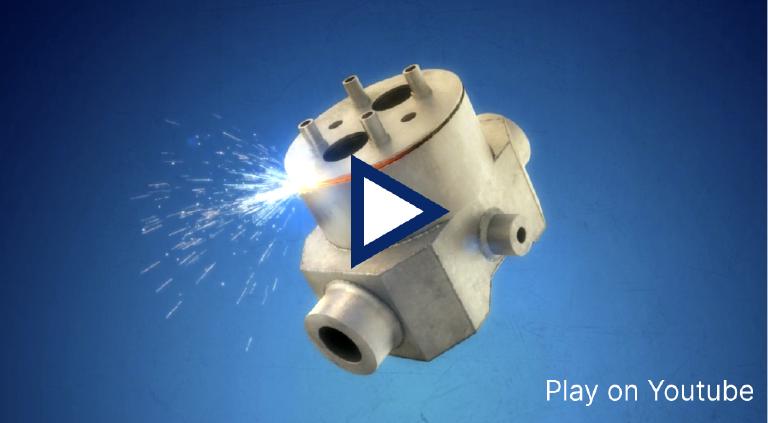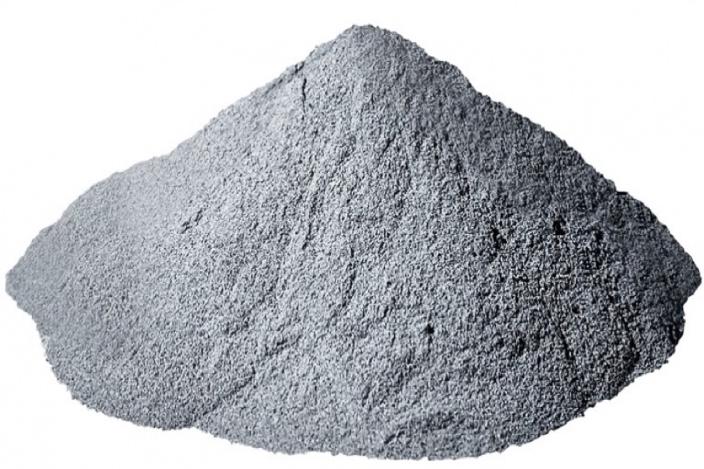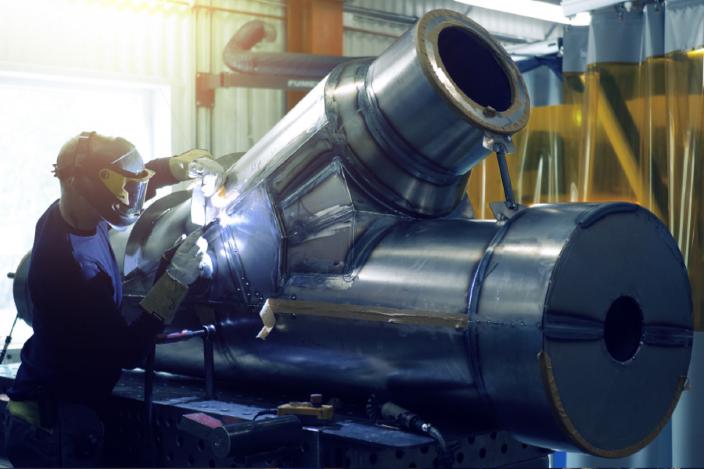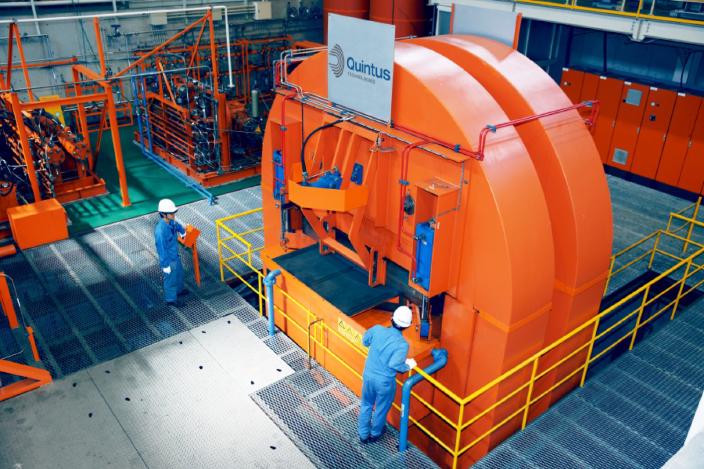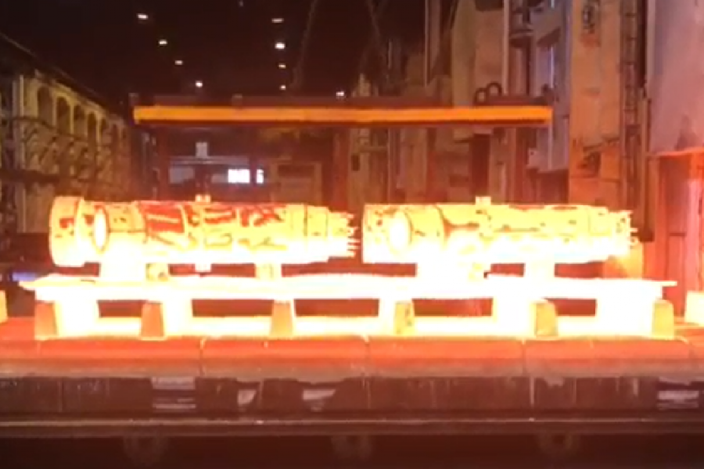How it works
The basic idea is simple. Place fine metal powder in a gas-tight steel capsule, heat to elevated temperature (but below melting point), apply isostatic gas pressure and you get a very strong, solid, 100% dense shape with practically no inclusions. The encapsulated powder can be HIPed to produce Near-Net Shapes (NNS) of virtually any geometry. Not only does this offer more design freedom than forging or casting, it reduces the risk of hydrogen-induced stress cracking (HISC) in duplex stainless steels, since the process results in a material with very fine microstructure. It also eliminates the risk of any defects like cracks, porosity or stringers. By avoiding time-consuming welding and inspections in the forging-machining process, or weld repair in the casting process, you reduce risk and lead-time costs.
The production process from the melt to the finished product takes place in four stages.
